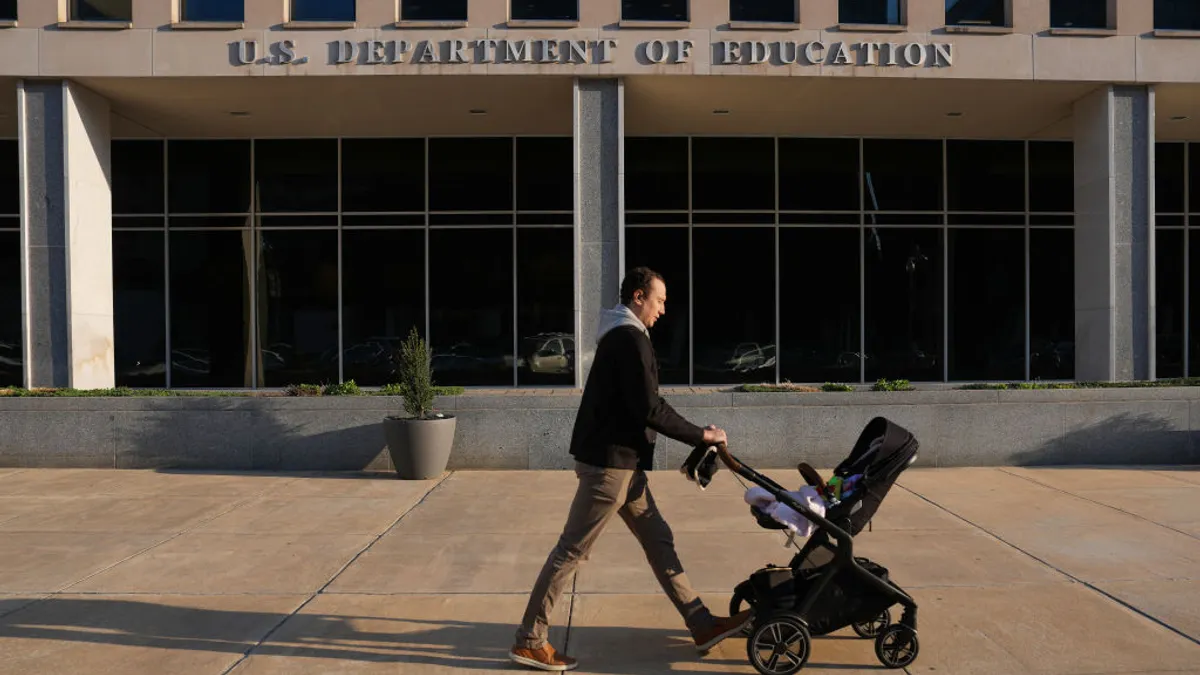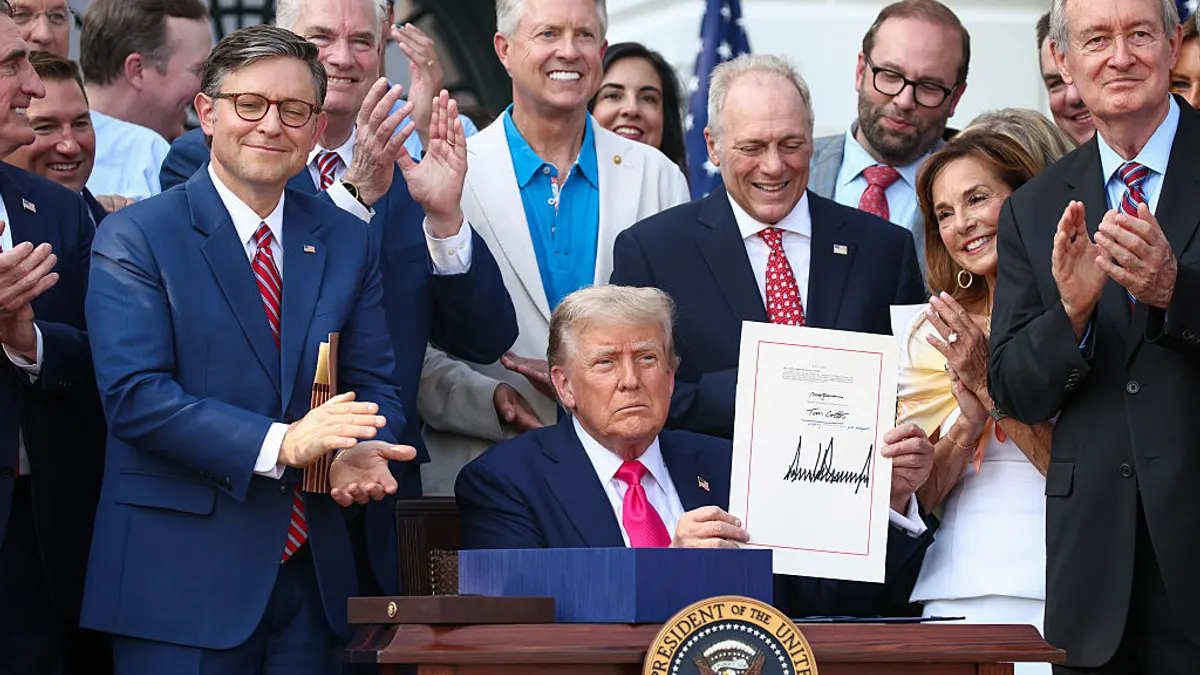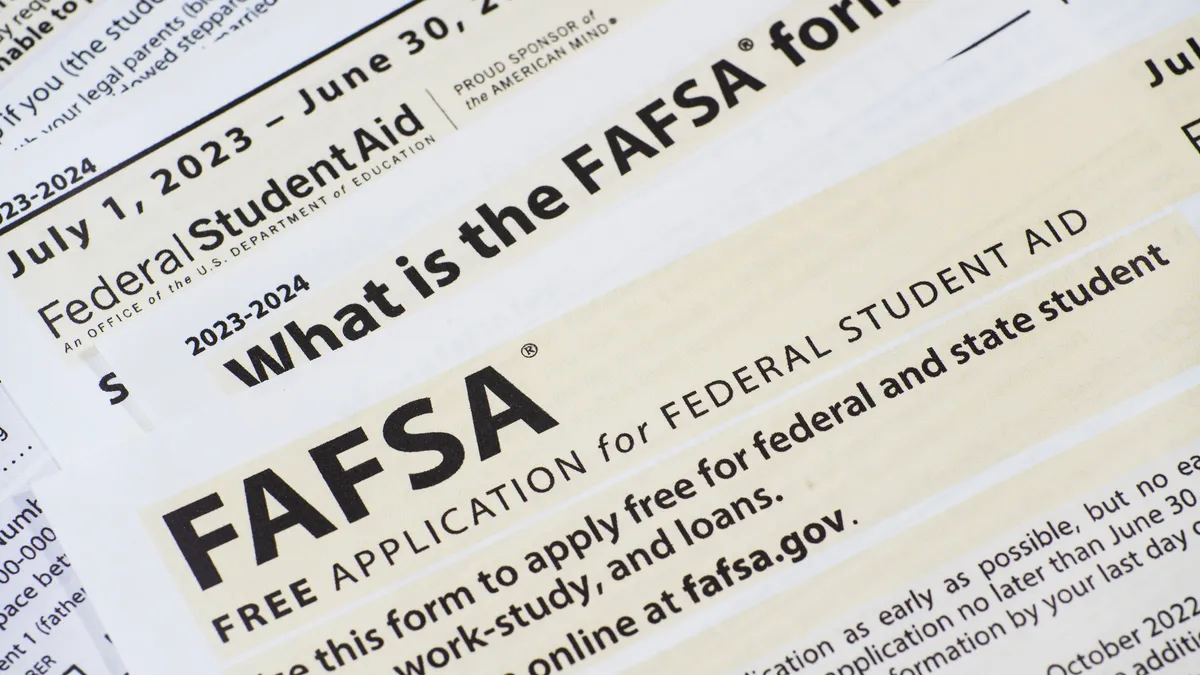Some colleges would no longer have to allow students to try out for a noncontact sports team that doesn't align with their gender if there is no equivalent team for their gender, under a Title IX regulation issued recently by the U.S. Department of Energy — not the U.S. Department of Education.
The rule change is to go into effect July 15 unless "significant adverse comments" were received by June 16. The change would only apply to colleges that receive grant funding from the Energy Department.
Specifically, the rule — called a "direct final rule" — would rescind the requirement that team sponsors offering teams for only one gender must allow members of the opposite gender to try out if no team exists for their gender, unless it is a contact sport. The rule defines contact sports as including boxing, wrestling, rugby, ice hockey, football, basketball and other sports that involve bodily contact.
In practice, the current rule means that if a college had a mens' baseball team but no womens' softball team, women must be allowed to try out for a spot on the mens' baseball team. Or it could mean that if a college had a womens’ gymnastics team but no men’s team, men must have the opportunity to try out for the womens’ team.
The Association of Title IX Administrators, in comments submitted to the Energy Department and shared with K-12 Dive, said the rule would harm cisgender athletes, as well as transgender, transitioning, nonbinary and intersex athletes.
Because the rule would "permit recipients to broadly discriminate on the basis of sex in direct conflict with the spirit and rule of Title IX," cisgender female athletes would have fewer opportunities to compete on sports teams, the organization said. For K-12 girls, that would lead to diminished opportunities to get a college athletic scholarship, it said.
The rule also discriminates against transgender athletes, ATIXA said.
“Any rule that sweeps so broadly that it assumes all transgender, transitioning, nonbinary, and intersex athletes have competitive advantages or could pose a danger based on their strength or size could be seen by the courts as overbroad," the group said.
In reality, the Energy Department change could lead to restrictions for 1,000 athletes when only one of those athletes may present a risk of unfair competitive advantage, ATIXA said.
K-12 schools would still be able to allow coed participation in these situations, they just wouldn’t be required to do so, said Julia Martin, director of policy and government affairs at The Bruman Group, a legal and consulting group based in Washington, D.C.
K-12 schools also would still be allowed to have girls on boys teams and vice versa for contact sports, but Martin said it’s best to refer to state and local rules policies regarding this.
Still, Shiwali Patel, senior director of safe and inclusive schools for the National Women’s Law Center, called the Energy Department rule "blatant sexism, and harmful to women and girls."
"The Trump administration is trying to gut long standing Title IX protections that intend to provide women and girls with more opportunities to play sports — and without following the legally required rulemaking process no less," Patel said in an email to K-12 Dive.
"The Trump administration doesn't actually care about ‘protecting’ women and girls, and instead, is actively seeking to dismantle" protections for them, Patel said.
It's not clear if any "significant adverse comments" were submitted in regard to the rule. As of Monday afternoon, slightly more than 2,000 comments had been submitted, although those comments weren't publicly available. The Energy Department did not respond to a request for comment on Monday.
Rulemaking process questioned
The potential impact the rule change would have on some colleges has many Title IX observers questioning the rulemaking process, and they predict it will leave officials confused.
That's because the Energy Department used a process reserved for proposed rule changes that aren't significant in scope or don't have major economic impacts. Moreover, it is the Education Department that typically issues education-related rules.
Martin said this action by the Energy Department is a good reminder that education-related policies are embedded throughout the federal government — and not only produced by the Education Department.
"That's one of the reasons why this change flew under the radar until the very last minute, is that we usually see the Department of Education taking the lead on school policy and sports participation, and certainly on Title IX," Martin said. The Energy Department posted the rule on May 16 but it did not gain wide attention then.
The notice said such rules "ignore differences between the sexes which are grounded in fundamental and incontrovertible reality." It also said local governments and small businesses are in a better position to set such rules.
Trump focuses on transgender athletes
The Trump administration has made limiting transgender students’ participation in sports a policy and legal priority. In February, President Donald Trump signed an executive order prohibiting transgender women and girls from participating on sports teams that align with their gender identity.
The Education Department's Office for Civil Rights has opened several investigations into state and local policies allowing for the participation of transgender athletes on women’s and girls’ sports teams.
And in April, the U.S. Department of Agriculture froze federal funding for Maine's school lunch program after a clash with state leaders over the state's policy of allowing transgender students on sports teams. A legal settlement allowed the funding to continue.
Meanwhile, several states have taken their own measures to define the differences between men and women that will have implications for accessing gender-specific facilities and sports teams.
The Energy Department's Title IX change was one of dozens it announced in May to cut down on burdensome rules, the agency said in a statement. The department said its deregulation efforts would save an estimated $11 billion and cut more than 125,000 words from the Code of Federal Regulations.






















